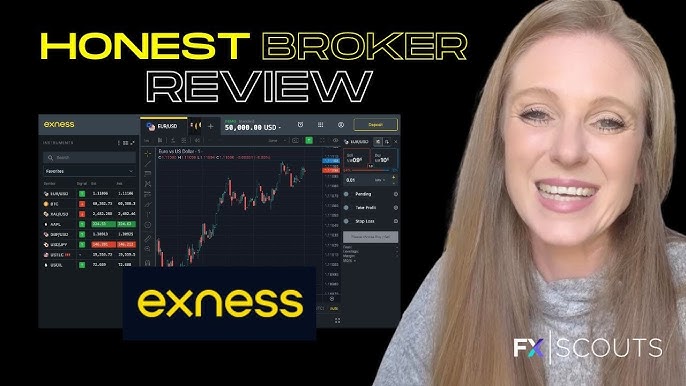
Exness Scalping Strategy: Mastering Quick Trades for Maximum Profit
The world of trading offers numerous strategies, each with its own intricacies and nuances. One of the most popular methods among traders is scalping—specifically, the Exness Scalping Strategy tradingplatform-hk.com. Scalping allows traders to capitalize on small price movements in a short time frame, generating profits rapidly. In this article, we will delve into the mechanics of scalping, provide actionable tips, and discuss the advantages and disadvantages of this trading style to help you get the most out of your trading endeavors.
Understanding Scalping in Forex
Scalping is a trading strategy that involves making numerous trades throughout the trading session to take advantage of small price fluctuations. Unlike position or day trading, which can have longer holding times, scalping typically requires the trader to open and close trades within seconds or minutes. The goal is to accumulate small gains that can compound over time, ultimately leading to significant profits.
When scalping in the Forex market, traders often rely on high leverage and tight spreads to maximize their earning potential. By entering and exiting the market with these precise tactics, scalpers can navigate minor price movements efficiently.
Key Components of the Exness Scalping Strategy
To effectively implement the Exness Scalping Strategy, traders should focus on several key components that enhance their trading experience:
1. Choosing the Right Trading Platform
Exness is known for its user-friendly and efficient trading platform, offering competitive spreads and fast execution speeds, which are crucial for successful scalping. The platform supports multiple trading instruments, making it easier for traders to diversify their scalping strategies across different asset classes.
2. Selected Currency Pairs

Not all currency pairs are suitable for scalping. Traders should focus on pairs with high liquidity and volatility, as these attributes provide better opportunities for quick trades. Major pairs like EUR/USD, USD/JPY, and GBP/USD are often preferred due to their consistent price movements.
3. Time Frames
Scalpers often rely on shorter time frames such as 1-minute or 5-minute charts. These time frames allow traders to track price movements closely and make rapid decisions. It is essential to develop the ability to read price action and identify potential entry and exit points without hesitation.
4. Technical Analysis Tools
Technical analysis plays a vital role in the Exness Scalping Strategy. Traders should utilize various indicators to assist in their decision-making process, including:
- Moving Averages: These indicators help identify the overall trend and possible reversals, providing insights into potential entry points.
- Momentum Indicators: Tools like the Relative Strength Index (RSI) help traders gauge whether a currency pair is overbought or oversold.
- Support and Resistance Levels: Identifying key levels allows traders to predict potential price reversals and breakout points.
Risk Management in Scalping
While scalping can be immensely rewarding, it also comes with risks. Effective risk management is essential to protect your trading capital:
1. Use a Stop-Loss Order
Setting a stop-loss order is a fundamental aspect of risk management in scalping. This order automatically closes your position if the price reaches a certain level, minimizing potential losses.
2. Maintain a Good Risk-to-Reward Ratio

It’s crucial to have a favorable risk-to-reward ratio on your trades. Successful scalpers often aim for a ratio of at least 1:2, meaning they risk one unit of currency to potentially gain two units.
3. Keep Emotions in Check
Scalping requires quick decision-making, so it’s crucial to stay disciplined and not let emotions drive your trades. Sticking to your trading plan helps maintain consistency and reduces the risk of poor decision-making.
Advantages and Disadvantages of the Exness Scalping Strategy
Before diving into scalping, it’s essential to weigh the pros and cons of the strategy:
Advantages
- Quick Returns: Scalpers can generate profits quickly, often making multiple small trades throughout the day.
- Less Exposure to Market Risks: Since trades are held for shorter durations, scalpers are less exposed to overnight market risks.
- Highly Engaged Trading: Scalping keeps traders actively engaged, making it ideal for those who enjoy a fast-paced trading environment.
Disadvantages
- High Transaction Costs: Frequent trading can lead to high transaction costs, which can eat into profits if not managed wisely.
- Emotional Stress: The rapid pace of scalping requires quick decision-making and can lead to emotional strain.
- Requires Significant Time Commitment: Successful scalping demands monitoring the market closely, which may not be feasible for all traders.
Conclusion
The Exness Scalping Strategy can be an effective means of generating profits in the fast-paced Forex market, provided that traders are well-prepared and disciplined. By focusing on the right tools, time frames, and risk management techniques, you can enhance your scalping skills and improve your trading performance. Remember, success in scalping, as with any trading strategy, comes from practice, patience, and continuous learning.
